I wanted a good database of commonly used patterns around the world. No single pattern is perfect for every environment but here are some to scan through. Pick a pattern that best suits your likely operational location and environment. This article is a start and will grow, with more pictures being added over time. I thought about this topic while reading Patriots the novel; the cover always irritated the hell out of me because it shows a guy in ACU pattern clothing; while the book they specifically chose the British DPM as it was a good woodland pattern, but different enough from regular and overly common woodland camo as to keep their personnel separate from any other people likely to wander through their area. There are one or two commercial paramilitary patterns but the rest are all current or very recently used.
Jon
Here’s what you will find below, and I will continue to update it:
- US Based Patterns
- Canadian Patterns
- British Patterns
- German Patterns
- French Patterns
- Russian Patterns
- Australian Patterns
- Danish Patterns
- Swedish Patterns
- Norwegian Patterns
- Dutch Patterns
- Swiss Patterns
- Hungarian Patterns
- Finish Patterns
- Italian Patterns
- Polish Patterns
- Turkish Pattern
- Cuban Pattern
- South African Pattern
- Jordanian Patterns
- Chinese Patterns
- South Korean Patterns
- Japanese Patterns
- Singapore
Operational Camouflage Pattern (OCP)
Scorpion W2 is a camouflage pattern adopted by the United States Army for future use as the Army’s main camouflage pattern, under the name Operational Camouflage Pattern (OCP). This new pattern will replace the Army’s Universal Camouflage Pattern (UCP) as the official combat uniform pattern for most US Soldiers. The new pattern will also replace the closely related MultiCam, a pattern previously used for troops deploying to Afghanistan.
The original Scorpion pattern was developed by Crye Precision as part of the Objective Force Warrior program more than a decade ago. The Scorpion W2 variant was modified from the initial pattern by Army Natick Labs. In July 2014, the Army announced that OCP could be used in the field by the summer of 2015.
The name Operational Camouflage Pattern is meant to emphasize its use beyond Afghanistan to all combatant commands, unlike the MultiCam pattern it is based on. A “family” of uniform patterns based on the OCP will also be made, including a dark jungle-woodland variant and a lighter pattern for desert environments.
MultiCam
First introduced in 2002, MultiCam was designed for the use of the U.S. Army in varied environments, seasons, elevations, and light conditions. It is a seven-color, multi-environment camouflage pattern developed by Crye Precision in conjunction with U.S. Army Natick labs.
If you wanted the side by side for a comparison below are first the new OCP, and second the MultiCam.
US ERDL (Woodland)
Woodland Pattern was the default camouflage pattern issued to United States soldiers, Marines, airmen, and sailors from 1981, with the issue of the Battle Dress Uniform, until its replacement around 2006. It was a four color, high contrast disruptive pattern with irregular markings in sand, brown, green and black.
MARPAT
MARPAT (short for MARine PATtern) is a digital camouflage pattern in use with the United States Marine Corps, introduced with the Marine Corps Combat Utility Uniform (MCCUU), which replaced the Camouflage Utility Uniform. Its design and concept are based on the Canadian CADPAT pattern. The pattern is formed of small rectangular pixels of color. In theory, it is a far more effective camouflage than standard uniform patterns because it mimics the dappled textures and rough boundaries found in natural settings. It is also known as the “digital pattern” or “digi-cammies” because of its micropattern (pixels) rather than the old macropattern (big blobs). MARPAT has patterns produced by highly complex fractal equations. The purpose of the digitized pattern is to match the visual texture of typical backgrounds. When compared to a white background the MARPAT does look surprising and would seem to catch attention, but when used in an operative environment, its textured appearance and lack of hard edges make it more effective than traditional patterns.
Desert Camouflage Uniform (DCU)
The Desert Camouflage Uniform (DCU) is an arid camouflage uniform used by the United States Armed Forces. It is nearly identical to the U.S. military’s Battle Dress Uniform (BDU) uniform, albeit featuring the three-color desert camouflage pattern of dark brown, mint green, and beige, as opposed to the pale green, dark/light brown, beige, and black and white rock spots of the Desert Battle Dress Uniform (DBDU).
Desert Battle Dress Uniform
Although the chocolate-chip camouflage became well known during the Persian Gulf War, it was originally designed decades prior, in 1962. The U.S. Army, believing that it might become necessary to intervene in the Arab-Israeli conflicts, developed a test pattern using the deserts of southwestern United States as a model. The Desert Battle Dress Uniform uses a camouflage pattern known as the Chocolate-Chip Camouflage, Cookie Dough Camouflage, or the Six-Color Desert Pattern. The camouflage received its nickname because it apparently resembles chocolate-chip cookie dough. It is made up of a base pattern of light tan overlaid with broad swathes of pale olive green and wide two-tone bands of brown. Clusters of black-on-white spots are scattered over, to mimic the appearance of rocks.
Universal Camouflage Pattern
The Universal Camouflage Pattern (UCP), also referred to as ACUPAT (Army Combat Uniform PATtern) or Digital Camouflage (“digicam”) is the military camouflage pattern currently in use in the United States Army’s Army Combat Uniform. The pattern was chosen after several laboratory and field tests that occurred from 2003 to 2004, although it has recently been established that UCP may well have been adopted without field testing against other patterns. Its pixelated pattern is a modification of the United States Marine Corps’ MARPAT camouflage pattern which is simply a re-coloured version of the earlier Canadian CADPAT scheme. However, UCP was not well received and is likely to be withdrawn after eight years in service.
UCP-Delta
As a result of a photosimulation study conducted in 2007 by Natick as well as Congressional language directing the Army to provide an enhanced camouflage capability for Soldiers on operations in Afghanistan, the Army undertook a four-phased initiative to explore alternate camouflage patterns for the Army Combat Uniform (ACU). UCP-Delta was the front runner of the series but was ultimately beat out by Crye Precision’s MultiCam.
Air Force Battle Uniform
The first prototype of the ABU was unveiled in the summer of 2003, based on the Vietnam-era Tigerstripe pattern. The early uniform prototypes consisted of trousers, an embroidered undershirt, and a blouse. The camouflage pattern, developed by Tiger Stripe Products and based upon their popular copyrighted Original Vietnam Tiger Stripe, was a blue/gray, tiger stripe pattern. After months of “wear testing”, Air Force officials revised the color scheme and camouflage pattern due to feedback received from Airmen. The new elementary semi-pixelated tiger pattern would trade its dominant blue overtones for a more subdued palette, which still includes some blue tones. However, few of the functional recommendations made by Airmen in the field were implemented into the uniform which remains very similar in design to the older BDU style uniforms. This has been a subject of many complaints from Airmen returning from duty in Iraq and Afghanistan who had been wearing the U.S. Army-issued Army Combat Uniform (ACU) as a temporary issue uniform. These complaints include the ABU’s inability to keep Airmen cool while working in desert conditions due to the thickness of the material (13 ounces) and large interior “map” pockets, lack of storage space and the low ease of use with government issue personal body armor.
NWU-3
Two additional US Navy patterns were adopted in 2010, for issue strictly to Navy Special Operations. The patterns are intended for wear in temperate/tropical and desert/arid environments, respectively, and have come to be known as NWU-3 and NWU-2 (NWU Type 3 and Type 2) respectively. Both patterns are essentially revisitations of the original USMC MARPAT design, having a vertical (vice horizontal) orientation and a slightly varied coloration. Instead of the USMC EGA logo, the NWU-2 and 3 (like the NWU-1) has the Navy coat-of-arms embedded into its design. Early trial versions of the pattern were called variously Digi 1 and 2, DG-1 and DG-2, and AOR (Area of Responsibility) 1 and 2. Although primarly intended for Navy Special Operations, the USN has indicated that NWU-3 or the temperate version of their camouflage may also be worn by Navy personnel engaged in shore-based operations, but not the NWU-2 desert variant.
CADPAT
Canadian Disruptive Pattern (CADPAT; French: dessin de camouflage canadien, DcamC) is the computer-generated digital camouflage pattern currently used by the Canadian Forces (CF). CADPAT is designed to reduce the likelihood of detection by night vision devices.
Disruptive Pattern Material
Disruptive Pattern Material (DPM) is the commonly used name of a camouflage pattern used by the British Armed Forces as well many other armies worldwide, particularly in former British colonies. The main variants of DPM are a four-color woodland pattern, and desert patterns in two, three or four colors. Although slight changes have been made to DPM and the colors, the pattern is easy to recognize. There are also jungle versions of DPM where the colors are brighter, and on one variation the tan is darker than the green. A desert variant was first issued on a limited basis in the late 1980s. This appeared very similar, but consisted of subdued sand and khaki hues. This was replaced by a two-color version by 1990 because four-color versions had been adopted by some Middle Eastern countries, notably Iraq.
Multi-Terrain Pattern
The Multi-Terrain Pattern is a camouflage pattern printed on equipment issued to British forces. As part of the British Ministry of Defence’s (MOD) Personal Equipment and Common Operational Clothing (PECOC) programme, three new camouflage patterns were considered for issue to British forces. These were a revised temperate DPM using lighter colours, a new three-colour desert pattern with enhanced utility for night-time operations, and a hybrid four colour scheme using two colours from each of the previous patterns for use on webbing in all terrains. Following an Urgent Operational Requirement for a camouflage uniform for the Afghan theatre of operations, and the success of a commercially available pattern (Crye’s MultiCam) when tested in trials, a decision was made to use MultiCam as the basis of a new Multi-Terrain Pattern for British armed forces, replacing the previous temperate DPM uniforms. Desert DPM uniforms were to be retained.
Flecktarn
Flecktarn (German: “spotted camouflage”; also known as Flecktarnmuster or Fleckentarn) is a 3-, 4-, 5- or 6-color disruptive camouflage pattern, the most common being the five-color pattern, consisting of dark green, light green, black, red brown and green brown or tan depending on the manufacturer. The use of spots creates a “dithering” effect, which eliminates hard boundaries between the different colors in much the same way the squares in the newest digital camouflage patterns do. The pattern is designed for use in temperate woodland terrain. It has been adapted as desert camouflage by varying the colors.
Centre Europe
The French use a “Central European” pattern, which almost resembles the US’s own Woodland pattern.
Tigerstripe
Tigerstripe is the name of a group of camouflage patterns developed for close-range use in dense jungle during jungle warfare by the South Vietnamese Armed Forces/US Forces. It derives its name from its resemblance to a tiger’s stripes. It features narrow stripes that look like brush-strokes of green and brown, and broader brush-strokes of black printed over a lighter shade of olive or khaki. The brush-strokes interlock rather than overlap, as in French Lizard pattern (TAP47) from which it apparently derives. There are many variations: R.D. Johnson counted at least 19 different versions in early drafts of Tiger Patterns, his definitive work on the subject, although it is unclear if these are all different print patterns, or if they include color variations of a few different print patterns.
Partizan
Partizan is a four-colour camouflage, with the summer pattern comprising dark brown, dark earth and yellow ochre elements on a medium green background. An autumn version incorporates black, loam, dark brown, ochre & moss green shapes on a sandy background, and also reverses to a subdued version of the pattern. Both patterns are popular with Russian special operations troops in the VSR and MVD, as well as the Spetsgruppa Al’fa of the FSB, who were the initial users.
EMR
In 2008, Russia introduced a pixelated camouflage design intended to replace the VSR and Flora patterns. Officially called единая маскировочная расцветка (Edinaya maskirovochnaya rascvetka) or EMR, translating roughly as Universal Camouflage Pattern, the pattern is often referred to as Tsifra, Tetris or “digital flora.” Several variations of this pattern have been produced, the most common of which is the leto (summer) variant incorporating tiny pixels of black, reddish-brown and foliage green on a pale green background. Other versions include sever (northern regions), zima (winter), and gorod (urban). Full-scale adoption began in 2011.
SURPAT
New digital camouflage SURPAT® (Survival Pattern) with new shades of colors was developed by SURVIVAL CORPS, Ltd in co-operation with units of Russian Special Forces. Colors were selected with shades of grey for city, green and brown for forest, brown and grey for desert and grey and black for the mountains. Pattern and shades of colors are designed match any environments, allowing a person to remain invisible to the enemy.
Berezhka
During the transitional period, and for several years to come, a number of the camouflage patterns designed and used in the USSR continued to be worn by the new Russian Armed Forces. Of these, the oldest pattern to see widespread use was the solnechnye zaychiki (sunshine rays) KLMK uniform, which has continued to be worn by some Russian special forces, as well as reservists, Engineer & Cossack units of the Russian Army. The contemporary term for this pattern is berezhka (birch) or serebryanyi list (silver leaf).
DPCU/DPDU
The first uniforms using the disruptive pattern camouflage (called Disruptive Pattern Camouflage Uniform – DPCU) were issued in 1983 for test purposes. In 1986 the final production version was introduced with a number of changes. It is influenced partly by early US Jungle Camouflage patterns, such as “Duck Hunter”/”Frog-Skin”. DPCU was developed following aerial photographs of the Australian terrain to determine which colors and patterns would be most suitable for camouflage uniforms. The selected five color pattern consists of a greenish sand colored background with randomly arranged spots of orange-brown, mid-brown, leaf-green and dark green overlaid. While a mid-grey tone was included in early test uniforms, this was omitted in later uniforms in favor of a second brown tone. The standard DPCU works in areas from arid bushland through to tropical jungle all over Australia.
Officially named DPDU (Disruptive Pattern Desert Uniform), a DPCU variant designed for desert conditions using different colors, was first tested in 1998 at the Woomera Missile Test Site in South Australia. The first version, from 2001, was printed in 3 colors (brown and grey on a tan background) with 1/3 of the normal pattern missing and rushed into issue for the Australian Special Air Service Regiment deployed to Afghanistan as part of the International Security Assistance Force (ISAF). A second version from a year later used 5 colors: brown, lime green, grey, and a very light blue on a tan background. This was again issued to SASR in Afghanistan after the first version was found to be too light in color for the terrain. This was followed by a third issue in: brown, grey, very light blue and purple on a yellow background. The cut was changed in the shirt with the bottom pockets being omitted and placed on the sleeves. This was replaced in 2006 by the current-issue DPDU. The colors remain the same as the previous DPDU. Changes to the uniform include repositioning of shoulder straps to the chest, the changes of the chest pockets and cargo pockets from the button-fastened flap of the pocket to zips and minor changes to the sleeve pockets. This the current type issued to all ADF personnel serving overseas in arid/desert regions such as Iraq.
ACPU
In late 2010 it was announced that Australian personnel deploying to Afghanistan would all receive US-produced Multicam pattern camouflage uniforms, as it was determined this design had a higher performance rating than the DPCU. A variation of the pattern, developed specifically for Australian military personnel by Crye Industries and incorporating many of the “bunny” and “jellybean” features found in the standard DPCU (although reduced in size), will begin replacing commercial Multicam for troops deploying to Afghanistan in late 2012. The pattern also has a miniature Australian Military Forces (AMF) logo embedded into the design. The Australian Army website refers to this design as Australian Multicam Pattern (AMP), and the uniform itself as Australian Multicam Pattern Operational Combat Uniform (AMP OCU). This uniform only saw issue for approximately two years, and was replaced by the Multicam-hybrid uniform
M/84 & T/99 Pletsløring
The M/84 Pletsløring (“spot camouflage”) pattern is a derivative of the “Flecktarn B” pattern produced by the German firm Marquardt & Schulz. Using the same shapes and pattern, the Danes changed the number of colors from 5 to 3 – choosing olive green, light green and black to better match the coloration of the Danish woodland environment. T/99 is the designation of the camouflage pattern of the Danish Armed Forces desert combat uniform. It is a 3 color camouflage pattern, similar in design to the Danish M/84 pattern. It is considered to be the desert counterpart of M/84, and consists of different colors better suited for arid climates. The uniform contains splotches of earthy red and dark green on a sand-colored background. While T/99 is rumored to be a modified variant of German Desert Flecktarn (Tropentarn) camouflage, it is actually a recolored variant of the original Danish M84 Pletsløring (spot camouflage) pattern, in which earthy red has replaced black, dark green has replaced light green, and the sand color has replaced the olive green of the original M/84.
M90 camouflage (my mother in law will be to upset if i have Danish camo in here and not Swedish; i have to admit, it’s a cool pattern)
M90 camouflage is the camouflage pattern used by the Swedish armed forces. In addition to the standard pattern, desert and jungle variants have been developed for the international peace-keeping missions in Afghanistan and Liberia. The pattern employs basically a downscaled pattern of what’s been used on vehicles since the late 1970s, consisting of hard lined geometric shapes in order to create a camouflage pattern effective in the temperate forests and plains of Sweden. M90 camouflage comprises four colors: dark green, medium green, dark navy blue and grey. Navy blue was chosen instead of black because natural shadows generally tend to be in shades of blue to the human eye. M90TR BE (Tropik Beige) (Khaki) For forces working in desert environments. Similar to the M90TR but with the splinter pattern in desert colours.
M98 battle uniform
M/98 is the standard Norwegian Battle Uniform, used by the Army (Hæren), Air Force (Luftforsvaret), and National Guard (Heimvernet). It is an updated version of the older model M/75, and is used together with different hats according to military branch. The uniform consists of jacket and trousers and comes in the Norwegian camouflage. The jacket has two breast pockets and two big hand pockets, both with flap and a sewn on velcro above left breast pocket for the name tag. The trousers have regular pockets for hands – one back pocket and cargo pockets with flap. In addition to the regular Norwegian camouflage in green, brown and a darker green color, a special desert pattern has also been developed for the Afghan and Iraqi missions. The desert pattern consists of light green, brown and dark brown. The M/98 is commonly used in garrison and only rarely used in the field.
NFP
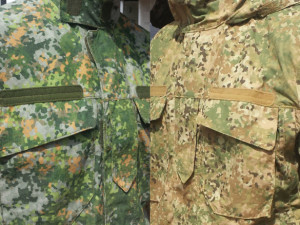
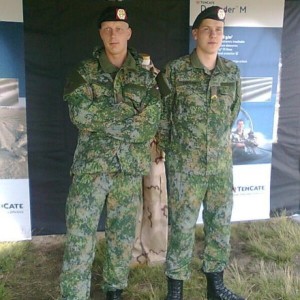
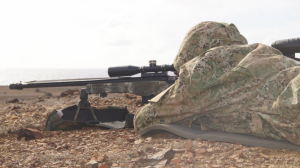
In 2011, the Dutch Army released prototypes of a new fractal camouflage pattern. Referred to by several sources as Netherlands Fractal Pattern (NFP), three versions have thus far been released: a temperate/woodland version (NFP Green), an arid/desert version (NFP tan), and a so-called “transitional” design for implementation on field equipment. The latter would theoretically perform well in all environments and would necessitate soldiers only being issued a single set of field equipment.
TAZ 90
TAZ 90 (fr:TASS 90, Swiss Woodland) is the camouflage patterns for current standard issue Battle dress uniform of the Swiss Armed Forces. The four-color pattern consists of tan, brown, green and black and is a development of the TAZ 57 and TAZ 83 (the “Alpenflage”) patterns which it replaced in the early 1990s.
M1990 four-color
In 1994, the Hungarian Armed Forces adopted a new camouflage pattern, the M1990 four-color. Incorporating black, dark brown & olive green shapes on a tan background, the coloration is similar to woodland designs being worn by France, Italy, the USA and others at this time, and was probably adopted to encourage its membership in NATO. A very wide variety of uniforms and sundry field equipment has been produced in this pattern, which continues to serve as the standard camouflage of the Hungarian Armed Forces.
A four-color desert pattern of Hungarian design was officially adopted in 2004. The design features reddish brown, beige and tan shapes on a sandy background, and is based on the M1990 drawings. This has since been worn by Hungarian personnel operating in Afghanistan and on deployments to other desert regions.
M05 Family (M04/M2)
The M05 family of military camouflage patterns are used by the Finnish Defense Forces on uniforms and other equipment. The pattern is licensed by the Finnish Defense Forces and it is not available to the public. The first M05 items were taken in use around 2007, and are slowly replacing the M91 pattern in service use. The basis of the planning of the new pattern are various photographs of Finnish forests taken by the Finnish Forest Research Institute. The photographs were then digitally edited by the Finnish State Technical Research Center’s Information Technology Institute and concentrated into a 4-colour pattern representative of a Finnish forest. Dark charcoal grey, was added to the pattern in order to represent shadowed areas in a forest. The pattern was field tested several times, leading to small changes. The new pattern was considered to be significantly better than the old M62 and M91 camouflage patterns. On the cold weather suit (Pakkaspuku) the woodland pattern’s light green colour has been replaced by grey, which is a more common color in the autumn and winter. Originally taken in use before other gear of M05 family and is officially called M04 although pattern has the same basic features and looks as other M05 family patterns. The first M04 items were taken in use around 2003 by Finnish contingent of UN peacekeeping mission in Eritrea (UNMEE) as a test pattern called K2004. K2004 garments were printed into heavier cloth than current M04 that is printed to Ripstop cloth.
Vegetato Camouflage
Currently used by Italian Army, Air Force, Navy, Carabinieri (Military Police/Gendarmerie, when on military operations). Also, desert variant of Vegetato camo. The standard camouflage for the Italian Forces is the vegetato (woodland).
Pantera
Poland’s Pantera (Panther) camouflage is a four-color pattern, comprising black, dark green and red brown elements on a medium grey-green background. First used by Polish Airborne and Cavalry brigades and units serving in UN missions, such as the United Nations Protection Force (UNPROFOR), this distinctive camouflage pattern was eventually developed as the standard uniform of the Polish Land Forces. A desert version of this pattern, called Pantera pustynna (desert panther), was introduced into service in March 2002.
Pantera Digital Woodland
Latest addition to Polish military uniforms, camo named “pantera leśna pixel”. Briefly used by some officers of Polish Army Special Forces in Iraq and Afghanistan
Turkish Pattern
The Azerbaijani Armed Forces (Azerbaijani: Azərbaycan Silahlı Qüvvələri) were re-established according to the Law of the Republic of Azerbaijan on the Armed Forces from 9 October 1991. The Azerbaijan Democratic Republic (ADR) had originally formed its own armed forces from 26 June 1918. However these were dissolved after Azerbaijan was absorbed into the Soviet Union as the Azerbaijan Soviet Socialist Republic from 28 April 1920. After the Soviet Union dissolved in 1991-92 the armed forces were reformed based on Soviet bases and equipment left on Azeri soil.
Grey Lizard
Emerging in the 1970s and based on the French tenue du leopard camouflage design, the Cuban grey lizard pattern has remained in service into the present day. Consisting of dark grey & golden brown or brown stripes on medium grey background, the design is best known for its use by Cuban advisors to southern Africa. It is also worn by the Guantanamo Bay Border Guards. This design has also been worn by FAPLA and contemporary forces in Angola. Several manufacturers are known, resulting in a significant number of variations being produced over the years.
Soldier 2000
Soldier 2000 is a camouflage pattern developed by the Council for Scientific and Industrial Research and is in use with the South African National Defense Force (SANDF). It is designed to be effective in all terrains and seasons encountered across South Africa.
KA2
In 2003, the Jordanian Ministry of Defense, under the directive of His Majesty King Abdullah II, implemented plans to replace the mixture of camouflage designs currently in use with a series of designs having a unifying foundation. Contracting with the HyperStealth® Biotechnology Corpporation of Canada, and using computer technology to design an effective system of camouflage patterns, the result was the KA2 series of digital camouflage patterns. Seven colorways were ultimately developed, for issue respectively to: Land/Air Forces, the Royal Guard, the Special Forces, the Navy/Coast Guard, the Public Security Directorate, the Civil Defense Directorate, and the Customs Department. The first six designs, each incorporating a tiny image of the outline of Jordan within the camouflage design, were first issued to Jordanian personnel in 2005.
Type 07
According to the press release by PLA officials in July 2007, the Type 07 Combat & Training Uniforms should be available in four basic camouflage patterns with each in a four-color scheme. However, the only Type 07 pattern mass-distributed is the universal pattern at the time. Later The desert pattern is primarily used during Winter, and firstly issued to troops in Tibet and border guards near Russia in the Northeast. Woodland is currently issued to Second Artillery Forces in dense forested regions, and the Type 07 Oceanic camouflage is issued to naval special combat units. There are more variants introducing since 2009.
Universal (Official name: 07 Universal Camouflage, “07 通用迷彩作训服”): Green, brown and black on grey background. This pattern is good for semi-urbanized terrain. It is the standard pattern for the PLA Ground Force and the PLA Air Force, and is being distributed to most of regular units. All officers and soldiers currently serving overseas or at multinational military events have received these uniforms.
Desert (Official name: 07 Arid Camouflage, “07 荒漠迷彩作训服”): Light khaki, dark brown and black on tan background. The original intent of this pattern was for desert or arid terrain, however it is actually issued as Winter Camouflage pattern regardless of terrain in north China. Footage of its cold weather parka had been seen on TV since late 2008, but the completed uniform was started to issue widely in late 2009.
Woodland (Official name: 07 Woodland Camouflage, “07 林地迷彩作训服”): Light yellow, medium brown and black on olive green background. It is designated for use in dense bush terrain or jungle, and is mainly issued to the PLA Second Artillery Corps for a couple of years before abandoned. Modified pattern will be reinstated to PLA Second Artillery Corps on May 2012.
Often seen in use by the Chinese Army in Tibet is an interesting camouflage uniform with a pattern apparently copied directly from the German 5-colour Flecktarn. Because of its association with the PLA in Tibet and Flecktarn, the pattern is often called “Tibet-tarn” by western collectors. However, according to Kamouflage.net, its official name is “Type 03 Plateau Pattern” and it is in fact used by all units of the Chinese Army based in semi-arid, high / mountainous regions.
Granite B
Adopted in the mid-2000′s the North Korean Army’s Woodland camouflage is causing some concern for the South Korean military who have begun to notice its use on the DMZ. The uniform strongly resembles the old US Woodland pattern and by extension the South Korean Woodland pattern which was adopted by their military in 1992. While the patterns are similar there are obvious differences in color and shapes. Tensions being what they are, there is concern in the South that the uniforms are being used by NK Special Forces who are conducting infiltration operations of the South. This is prompting South Korea to step up their timetable to field new “digital” camouflage uniforms to their forces. ROK Special Forces have been using a pixelated pattern for several years already and there is some conjecture that they will retain this pattern in spite of the upcoming change to the general purpose forces uniform.
ROK Woodland
By 1990, most of the South Korean Armed Forces (including elite units) had adopted a universal camouflage pattern based on woodland designs. Although similar to the US m81 woodland pattern, the drawings are significantly different in size and shape. The pattern has been in general service with the South Korean armed forces since 1992, and has been printed on both poplin and (more recently) ripstop cotton blend fabrics.
In 2004, South Korea introduced its own desert camouflage pattern, essentially a copy of the ROK Woodland pattern using a different colorway. This design was first issued to troops sent to Afghanistan in 2003.
Jeitai
A new camouflage design based on the German Army’s flecktarn was introduced in 1991 for issue to the entire JSDF. The pattern features black, brown and grass green dots on a khaki background, and is produced in a variety of uniform articles as well as field equipment. The pattern is often called Jeitai in reference to the indigenous name for the JSDF.
Singapore Pattern No 4
In 2009, the SAF introduced a series of two pixelated camouflage designs to replace the previous leaf pattern uniform. Designated “Uniform, Man’s, Pixelised, Camouflage Pattern No 4 Dress,” the temperate version incorporates black, foliage green and moss green on a brown base. A desert version also exists, having dark brown & tan on a sandy background.
For additional international information check out:
http://camopedia.org/
http://en.wikipedia.org/wiki/List_of_military_clothing_camouflage_patterns
http://www.kamouflage.net/


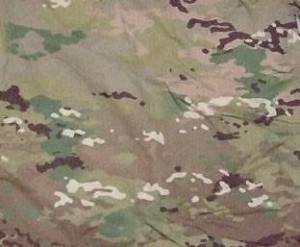


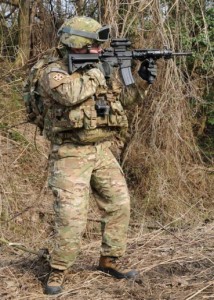
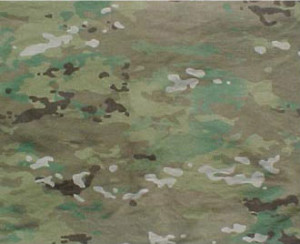
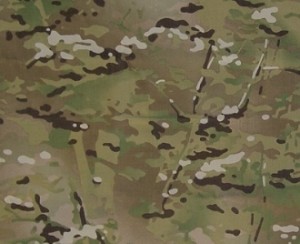

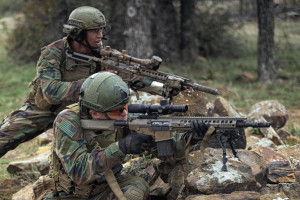

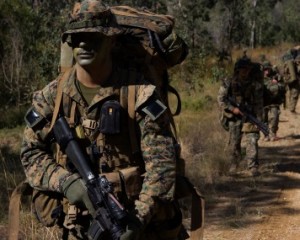





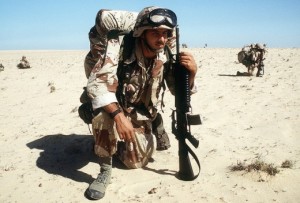
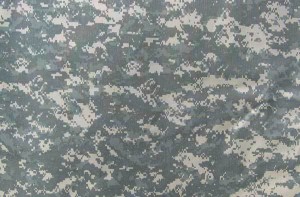
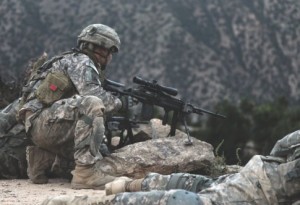
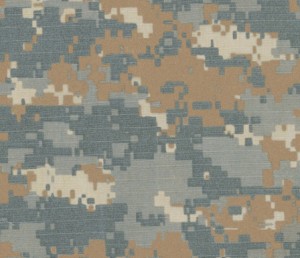
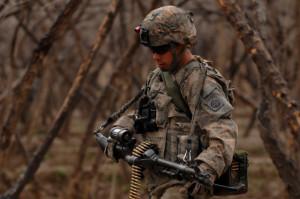
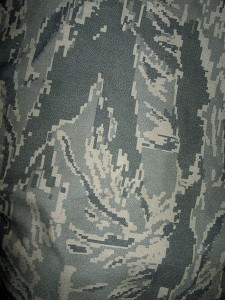
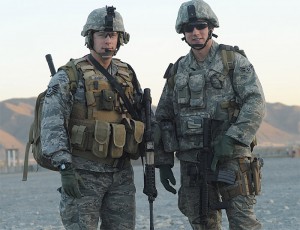
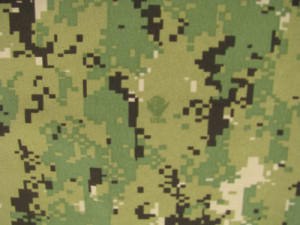
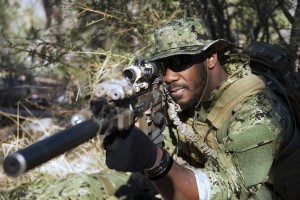


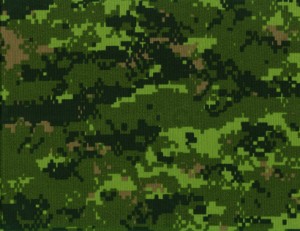
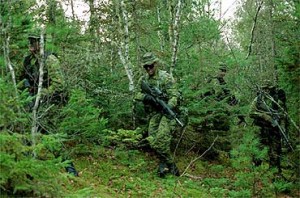


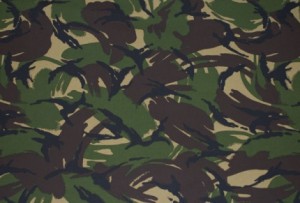
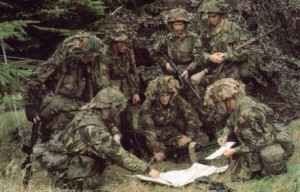
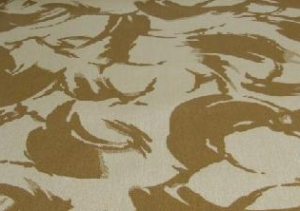


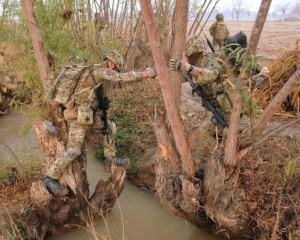
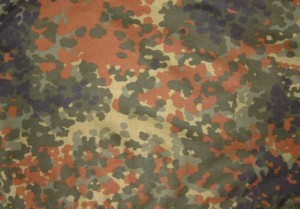
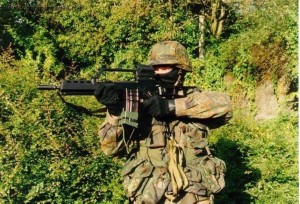

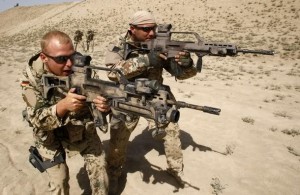
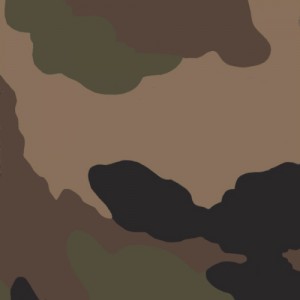
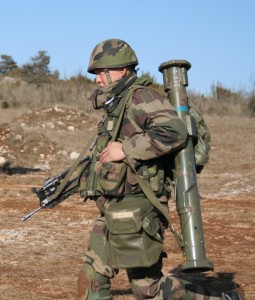
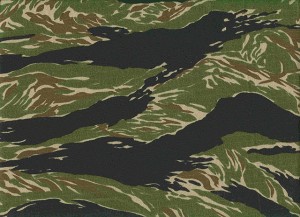
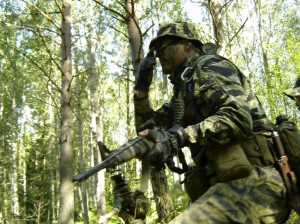
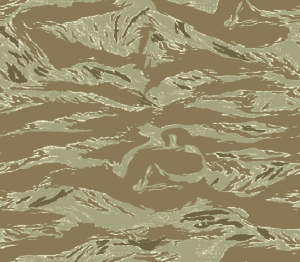
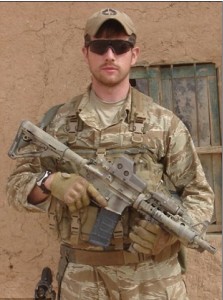
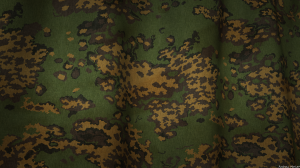

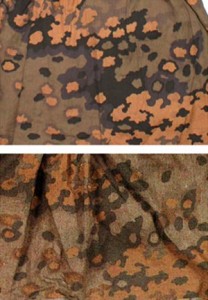
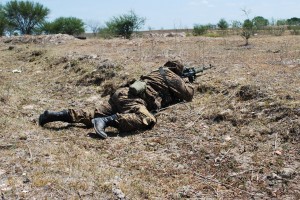
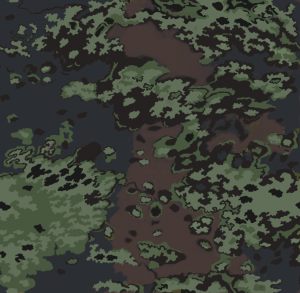


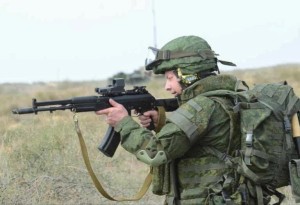
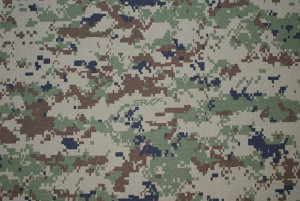
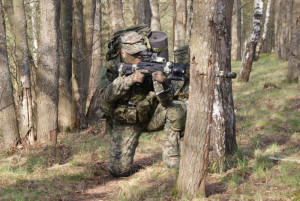
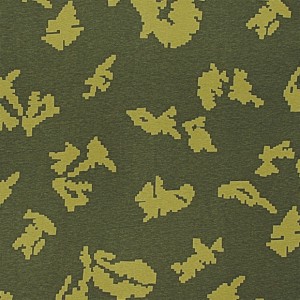
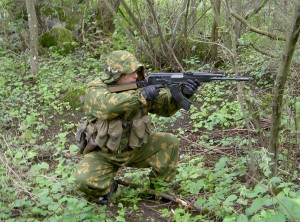

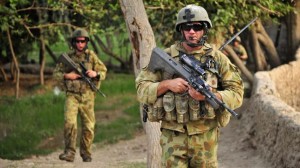
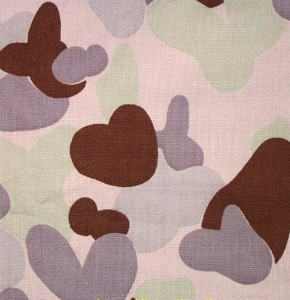
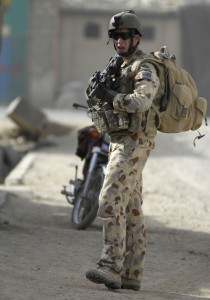

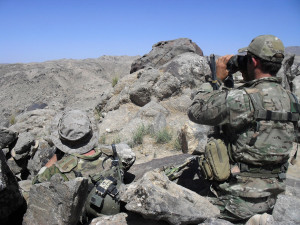
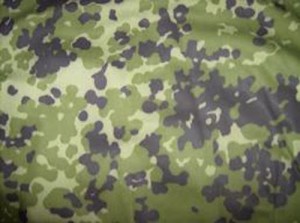
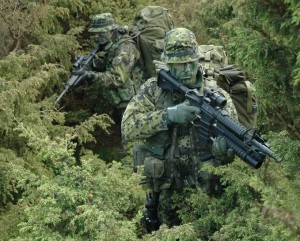


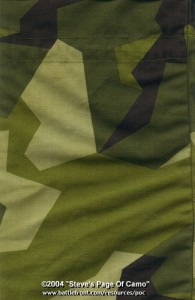

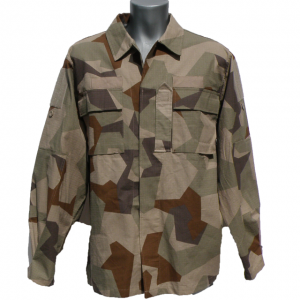
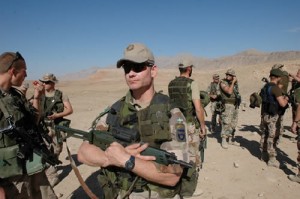
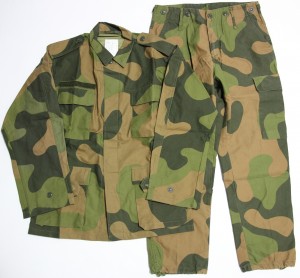
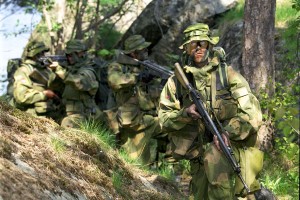
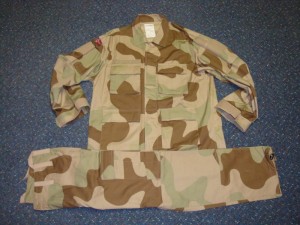
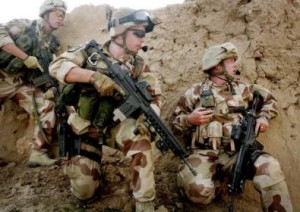
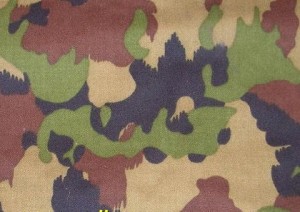
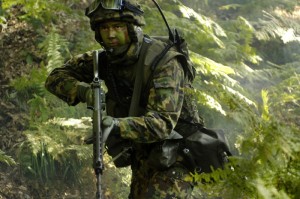
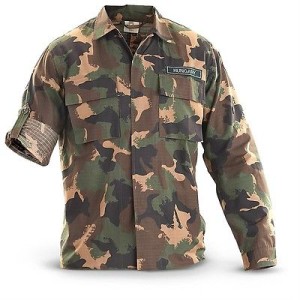
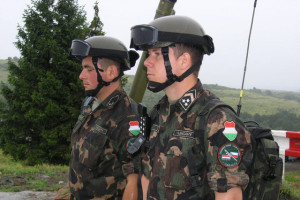
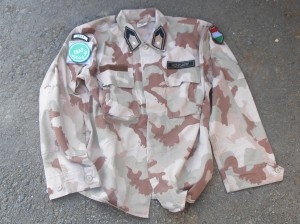
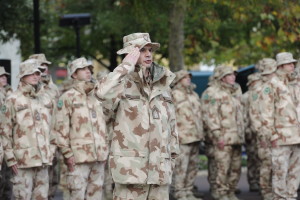
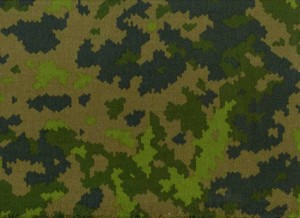
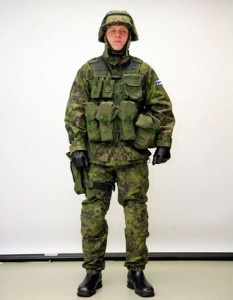
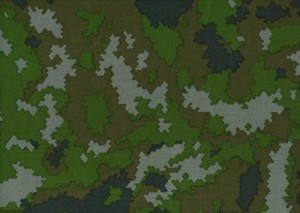
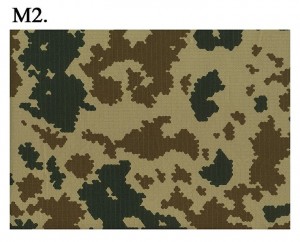
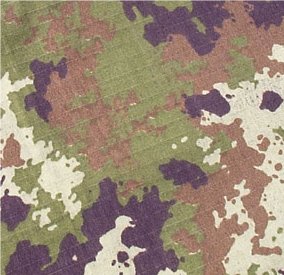
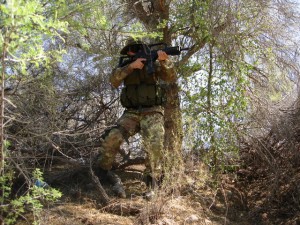
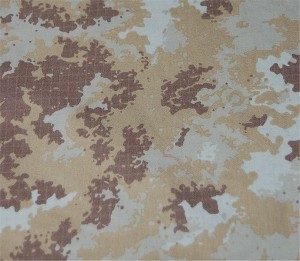
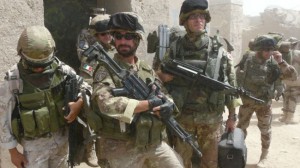
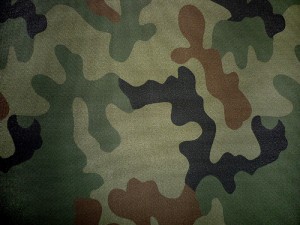
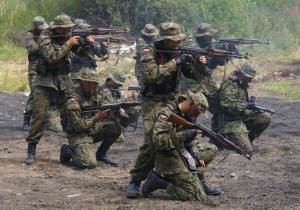
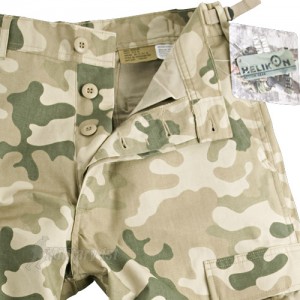


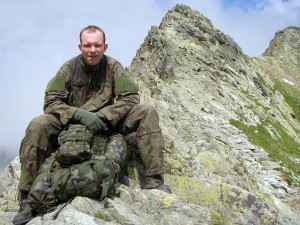

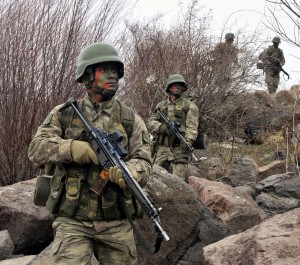
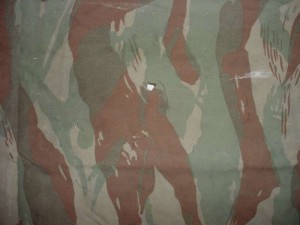

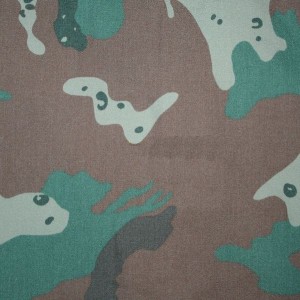
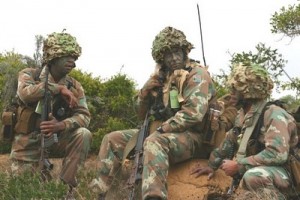
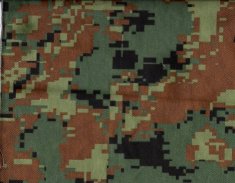

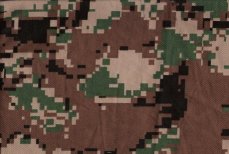
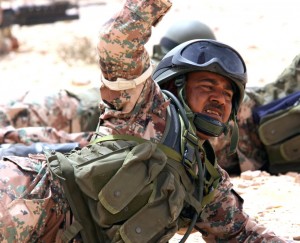

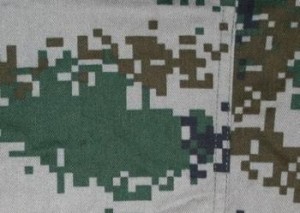
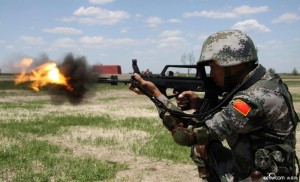
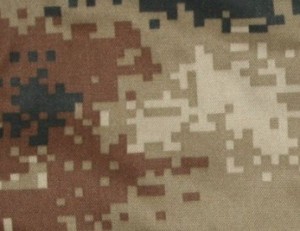

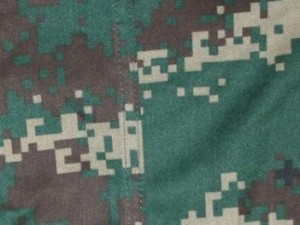
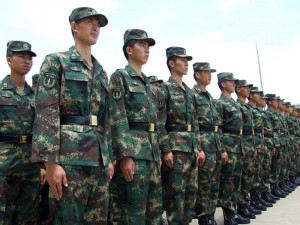
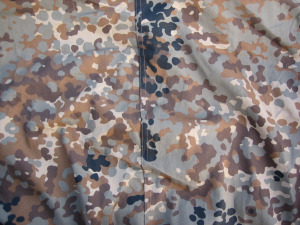
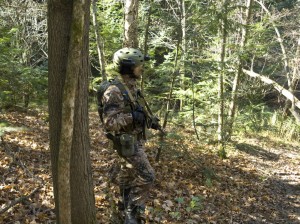

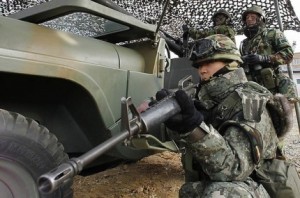
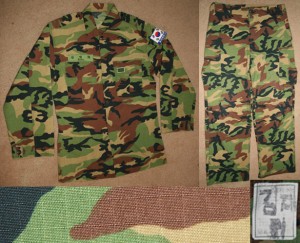
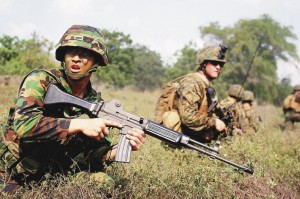
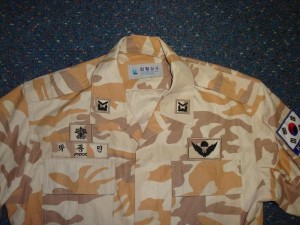
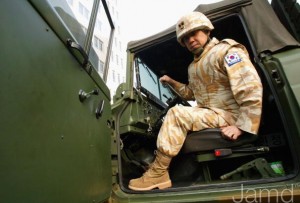

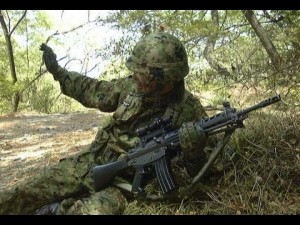
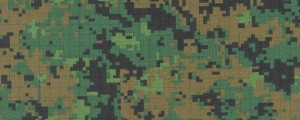
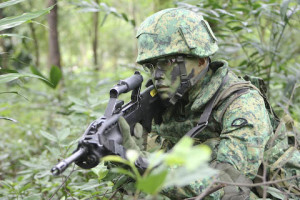

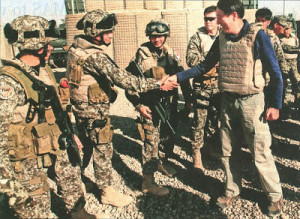
Camo and the research and technology behind it is fascinating. I’m in the heavily forested mountainous regions of Virginia. Me and my prepping partners have chosen the Woodland Camo BDU. Yes its a bit old school (like us?) but it just seems to work very well in this area and, importantly, also is not in use by any organized governmental units. Its cheap and very available. The other pattern we also considered briefly was the All Terrain Tiger pattern uniforms by Tru-Spec, and will remain an option going forward if we feel we need to update for some reason.
thanks for the information. woodland is never a bad pattern to go with. most my gear started out as woodland but has drifted into the multicam realm. I’ve found that if I give the black on the woodland I light spray of tan paint it lightens the color and helps it fit in with some of the Idaho terrain that I have in mind for bugging out.
The detail image of US Woodland is actually US ERDL.
The detail image of German desert Flecktarn is actually Danish desert Flecktarn.
i appreciate the spot check, i’ll make some corrections. honestly, i’ve always simply loved camouflage. as a kid i’d burn through G I Joe coloring books and the camo shirts and pants were the only thing i’d color.
The ERDL is actually M81 woodland. Please go and research it.